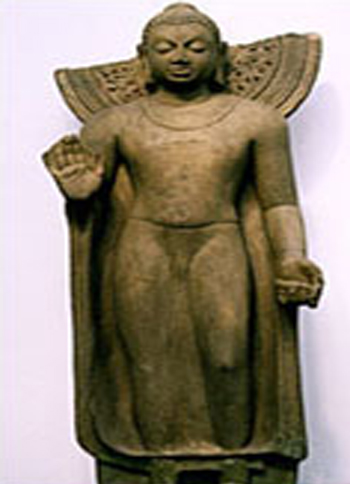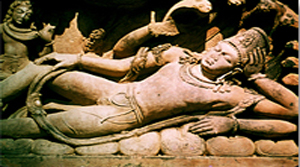Sculpture / Sculpture / Gupta Sculpture
The period of Gupta is often referred to as 'classic' due to its unprecedented level of achievement and the perfect balance and harmony it attained in terms of style and iconography. It is widely regarded as the "Golden Age of Indian Art." Gupta sculptures appear to belong to a realm that is entirely distinct. The Gupta artist appears to have strived for a loftier ideal, with a new approach to art that emphasizes a closer integration of art and thought, outer forms and inner intellectual and spiritual concepts of the people.
Features of Gupta sculpture
- Gupta sculpture centers around the human form, serving as the foundation for a new standard of beauty and an emerging aesthetic ideal.
- This ideal is based on a profound understanding of the human body's inherent softness and flexibility.
- Gupta sculptures feature soft, pliant bodies with smooth, glossy textures that allow for graceful and unencumbered movement.
- Gupta sculptures are known for their intricate drapery and jewelry.
- The fashion of the time was for wet or transparent clinging drapery, particularly for female figures. However, the conscious moral sensibility of the Gupta era kept sensuality in check, and nudity was rarely depicted in their sculptures.
- One of the most extraordinary examples of Gupta sculpture is the magnificent red sandstone Buddha from Mathura, dating back to the 5th century AD. The figure depicts the great Master in all his sublimity, standing with his right hand in Abhayamudra (assuring protection), and holding the hem of his garment with his left.
- The Buddha's smiling expression, with downcast eyes reflecting spiritual ecstasy, is covered by a robe that delicately drapes over both shoulders and clings to his body. His head is adorned with schematic spiral curls and a central protuberance, and his elaborate halo is decorated with graceful concentric bands of ornamentation.

- The remarkable craftsmanship and majestic serenity of the Mathura Buddha figure were later adopted and adapted by other countries that embraced Buddhism, such as Siam, Cambodia, Burma, Java, Central Asia, China, and Japan.
- Another excellent example of Gupta art is the standing Buddha from Sarnath, which embodies the maturity of Gupta sculpture. Unlike the intricate drapery folds of the Mathura Buddha, the Sarnath Buddha only shows the fringe of his diaphanous robe. The perfectly executed figure, with its serene and spiritual expression, truly captures the essence of this sublime being.
- Sarnath not only brought about a delicacy and refinement of form but also introduced a relaxed posture, with the standing figure slightly bending on its own axis. This added litheness and movement in contrast to the columnar rigidity of similar Mathura works.
- The stone carvings from the Deogarh and Udayagiri temples, as well as those from the Ajanta temples, are exceptional examples of figure sculpture in their decorative settings. A prime specimen is the large panel of Sheshashayi Vishnu from the Deogarh temple, depicting the Supreme Being slumbering on the serpent Ananta, the symbol of eternity, during the interval between the dissolution of the universe and its rebirth.


